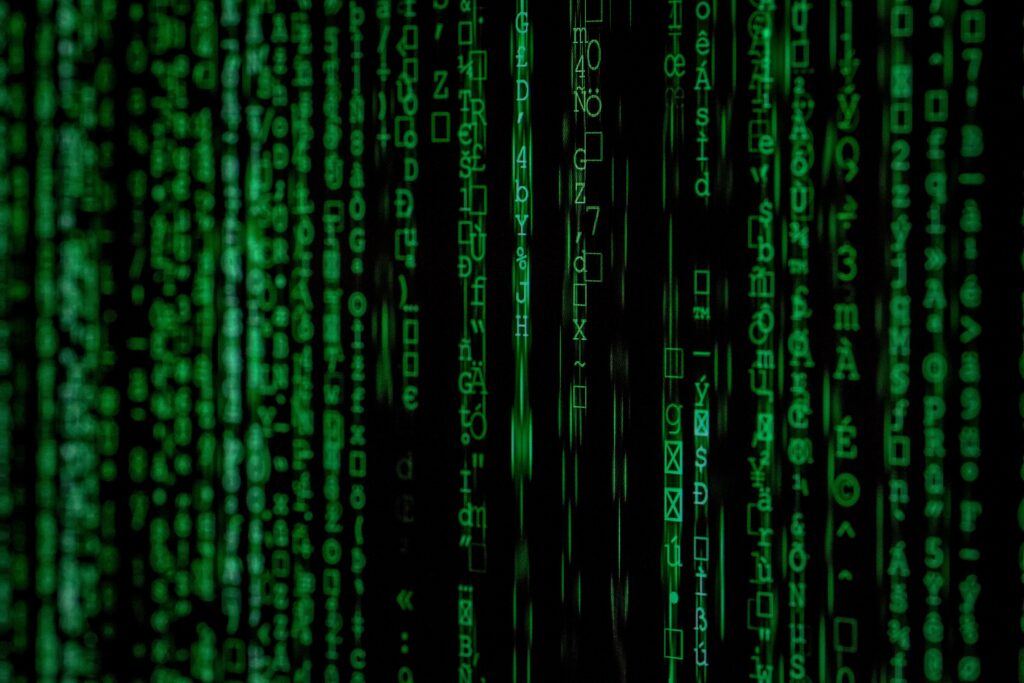This essay examines the evolving intersection of technology and religion, focusing on how digital transformations shape institutional legacies of equity and inclusion for spiritual communities. By critically analyzing three crucial dimensions — digital inclusion, algorithmic bias, and environmental harms — I illuminate how technological futures will enhance and challenge forms of community in the digital age. The essay concludes by proposing collaborative, justice-oriented interventions that could help these communities and technologists co-create digital futures underpinned by the ethical principles of equity, inclusion, and planetary sustainability.

Introduction
In recent years, news outlets and public intellectuals have boldly proclaimed the arrival of a new era in spiritual life—one mediated and transformed by artificial intelligence, algorithms, and digital platforms. These frames often configure the technology-religion relationship as driven by technological determinism, where technology becomes a futuristic substitute for religion. However, amidst these ambitious visions, important material considerations are often noticeably absent, such as how digital innovations like generative AI will reshape equity and inclusion for spiritual communities.
Sustainable and equitable futures extend beyond technological innovation. They unfold across multi-layered dimensions shaped by geopolitics, demographics, cultural diversity, climate change, global economics, and evolving religious practices.[1] The long-term implications of digital technologies for spiritual communities present new possibilities for communities and technologists alike in building inclusive and sustainable futures.
The following sections explore the significance of three future-facing challenges for spiritual communities: digital inclusion, algorithmic bias, and environmental harms.
Access Barriers, Digital Inclusion, and Religious Participation
During COVID-19, spiritual communities faced digital inclusion challenges regarding internet connection, device ownership, high costs, and communication infrastructure.[2] Limited accessibility, inadequate digital skills, and generational gaps created barriers when religious services moved online, excluding many older adults, rural residents, and those of lower socioeconomic status. Digital inclusion is crucial for addressing inequalities [3] as the digital divide disproportionately affects vulnerable groups, such as women, older adults, differently abled persons, and disadvantaged communities. [4]
Even with available infrastructure, navigating digital spaces poses challenges. Older congregants struggled with online services, and this persists as institutions assume digital literacy to participate in hybrid formats.[5] Pew Research Center (2022) reported that 36% of U.S. adults over 65 still lack reliable broadband.[6] The generational gap in technology use affects inclusive service design, while technological hesitancy can exclude those wanting to engage online. Even before the pandemic, budget and capacity-building barriers divided spiritual communities, with larger congregations often possessing more digital resources and staff expertise than smaller congregations.[7]

Algorithmic Bias and Religious Voices
Another concern is the rise of algorithmic bias, which occurs when an algorithm’s results consistently distribute benefits and burdens unequally among different individuals or groups, creating an unfair advantage.[8 Algorithms on social media platforms, while aiming to enhance engagement, can inadvertently create filter bubbles and echo chambers that can potentially reinforce existing stereotypes[9], amplify hate speech toward religious minorities[10], or lead to increased polarization in religion.[11]

Bias emerges through automated content moderation systems when non-Western religious content is misinterpreted as extreme or inappropriate.[12] Users from these communities consequently face disproportionate flagging and removal of their posts and accounts. Moderation tactics like downranking can limit content visibility, creating inequitable treatment of religious users and communities.[13] Effective interventions include implementing algorithmic transparency and establishing consistent cross-platform community standards to prevent unfair censorship of legitimate religious expression while filtering genuine hate speech.
Digital Technologies and Environmental Harm
As religious communities rely more on digital tools, they unknowingly contribute to environmental harm. The expanding energy demands of artificial intelligence, cloud data centers, and encryption technologies consume large amounts of energy, deplete freshwater resources, and carry a heavy carbon footprint.[14] According to a 2024 IEEE report[15], data centers use millions of liters of water and substantial energy to cool servers, with environmental consequences that disproportionately impact Global South communities.
When institutions upgrade their computer and sound systems and discard old tech, they contribute to the growing e-waste problem. Without intentional actions, e-waste is exported to extensive landfills or processing facilities, such as those located in Ghana and India, where workers are exposed to hazardous toxins.[16] Rapid technological innovation, short product lifespans, and massive consumption of electronics all contribute to the growth of e-waste and global inequity.

Creating more equitable and inclusive technological futures for spiritual communities requires a nuanced understanding of how religions, technologies, and human life intersect and evolve. As Campbell and Evolvi argue, spiritual communities are not passive recipients of innovation; they actively negotiate their engagements with technology. This view suggests spiritual communities also influence digital futures, particularly as digital platforms increasingly mediate religious experiences, media practices, and community formations[17], their engagements with technology in ways that reflect their values, objectives, and social needs.[18] How might these communities directly advocate for equitable access and design inclusive technology?
Emerging strategies offer promising directions for public engagement. Community-driven digital literacy initiatives enable individuals to learn digital environments while preserving critical agency in their spiritual practices.[19] Design justice frameworks engage diverse stakeholders in the co-creation of digital platforms [20], ensuring technologies respond to actual community needs rather than assumed ones.[21] Collaboration is crucial for human-centered systems, where advances support technological innovation, digital inclusion, and mitigation of algorithmic and environmental harms. By mapping key issues concerning both the intended and unintended long-term implications of unprecedented technological transformations, this essay establishes a foundation for vital conversations about how spiritual communities can imagine and actively engage in creating responsible futures.
Footnotes
[1] D. Schlagwein, W. Currie, J. M. Leimeister, and L. Willcocks, “Digital Futures: Definition (What), Importance (Why) and Methods (How),” Journal of Information Technology 40, no. 1 (2024): 2–8, https://doi.org/10.1177/02683962241301544.
[2] Heidi A. Campbell, “When Churches Discovered the Digital Divide: Overcoming Technological Inaccessibility, Hesitancy, and Digital Reluctance During the Covid-19 Pandemic,” Ecclesial Practices 10, no. 1 (2023): 36–61, https://doi.org/10.1163/22144417-bja10046.
[3] M. Pérez-Escolar and F. Canet, “Research on Vulnerable People and Digital Inclusion: Toward a Consolidated Taxonomical Framework,” Universal Access in the Information Society 22 (2023): 1059–1072, https://doi.org/10.1007/s10209-022-00867-x.
[4] Ruth Tsuria, “Digital Divide in Light of Religion, Gender, and Women’s Digital Participation,” Journal of Information, Communication and Ethics in Society 18, no. 3 (2020): 405–13.
[5] Heidi A. Campbell and Mandy Jordan, “The Digital Divide, Digital Reluctance and Its Impact on Pandemic Churches” (OakTrust Digital Repository, Texas A&M University, 2022), https://hdl.handle.net/1969.1/195938.
[6] Michelle Faverio, “Share of Those 65 and Older Who Are Tech Users Has Grown in the Past Decade,” Pew Research Center, January 13, 2022, https://www.pewresearch.org/short-reads/2022/01/13/share-of-those-65-and-older-who-are-tech-users-has-grown-in-the-past-decade/.
[7] A. Holleman, J. Roso, and M. Chaves, “Religious Congregations’ Technological and Financial Capacities on the Eve of the COVID-19 Pandemic,” Review of Religious Research 64, no. 1 (2022): 163–88, https://doi.org/10.1007/s13644-021-00477-8.
[8] Nima Kordzadeh and Maryam Ghasemaghaei, “Algorithmic Bias: Review, Synthesis, and Future Research Directions,” European Journal of Information Systems 31, no. 3 (2021): 388–409, https://doi.org/10.1080/0960085X.2021.1927212.
[9] Safiya Umoja Noble, Algorithms of Oppression: How Search Engines Reinforce Racism (New York: New York University Press, 2018).
[10] Alan Ramponi, Benedetta Testa, Sara Tonelli, and Elisabetta Jezek, “Addressing Religious Hate Online: From Taxonomy Creation to Automated Detection,” PeerJ Computer Science 8 (2022): e1128.
[11] Lina Rodenhausen, “Disentangling ‘Polarization in Religion,’” in Digital Religion Meets Politics: Pushing Boundaries and Opening-Up New Perspectives, Frontiers in Political Science 6 (2025): 1492172.
[12] Subhah Wadhawan, “Let the Machines Do the Dirty Work: Social Media, Machine Learning Technology and the Iteration of Racialized Surveillance,” Canadian Journal of Law and Technology 20, no. 1 (2022): 1.
[13] Erich Prem and Brigitte Krenn, “On Algorithmic Content Moderation,” in Introduction to Digital Humanism: A Textbook, ed. Hannes Werthner et al. (Cham: Springer Nature, 2023), 481–93, https://doi.org/10.1007/978-3-031-45304-5_30.
[14] Noman Bashir et al., “The Climate and Sustainability Implications of Generative AI,” An MIT Exploration of Generative AI, March 2024, https://doi.org/10.21428/e4baedd9.9070dfe7.
[15] Nir Kshetri, “The Environmental Impact of Artificial Intelligence,” IT Professional 26, no. 3 (May–June 2024): 9–13, https://doi.org/10.1109/MITP.2024.3399471.
[16] Samuel Abalansa et al., “Electronic Waste, an Environmental Problem Exported to Developing Countries: The GOOD, the BAD and the UGLY,” Sustainability 13, no. 9 (2021): 5302.
[17] Heidi A. Campbell and Giulia Evolvi, “Contextualizing Current Digital Religion Research on Emerging Technologies,” Human Behavior and Emerging Technologies 2, no. 1 (2020): 5–17; see also Heidi Campbell, When Religion Meets New Media (New York: Routledge, 2010).
[18] Ibid; see also Heidi Campbell, When Religion Meets New Media (New York: Routledge, 2010).
[19] Brian Detlor et al., “Community‐Led Digital Literacy Training: Toward a Conceptual Framework,” Journal of the Association for Information Science and Technology 73, no. 10 (2022): 1387–1400.
[20 Sasha Costanza-Chock, Design Justice: Community-Led Practices to Build the Worlds We Need (Cambridge, MA: MIT Press, 2020).
[21] Payal Arora, From Pessimism to Promise: Lessons from the Global South on Designing Inclusive Tech (Cambridge, MA: MIT Press, 2024).
Works Cited
Abalansa, Samuel, Badr El Mahrad, John Icely, and Alice Newton. “Electronic Waste, an Environmental Problem Exported to Developing Countries: The GOOD, the BAD and the UGLY.” Sustainability 13, no. 9 (2021): 5302.
Arora, Payal. From Pessimism to Promise: Lessons from the Global South on Designing Inclusive Tech. Cambridge, MA: MIT Press, 2024.
Bashir, Noman, Priya Donti, James Cuff, Sydney Sroka, Marija Ilic, Vivienne Sze, Christina Delimitrou, and Elsa Olivetti. “The Climate and Sustainability Implications of Generative AI.” An MIT Exploration of Generative AI, March 2024. https://doi.org/10.21428/e4baedd9.9070dfe7.
Campbell, Heidi A. When Religion Meets New Media. New York: Routledge, 2010.
———. “When Churches Discovered the Digital Divide: Overcoming Technological Inaccessibility, Hesitancy, and Digital Reluctance During the Covid-19 Pandemic.” Ecclesial Practices 10, no. 1 (2023): 36–61. https://doi.org/10.1163/22144417-bja10046.
Campbell, Heidi A., and Giulia Evolvi. “Contextualizing Current Digital Religion Research on Emerging Technologies.” Human Behavior and Emerging Technologies 2, no. 1 (2020): 5–17.
Campbell, Heidi A., and Mandy Jordan. “The Digital Divide, Digital Reluctance and Its Impact on Pandemic Churches.” OakTrust Digital Repository, Texas A&M University, 2022. https://hdl.handle.net/1969.1/195938.
Costanza-Chock, Sasha. Design Justice: Community-Led Practices to Build the Worlds We Need. Cambridge, MA: MIT Press, 2020.
Detlor, Brian, Heidi Julien, Tara La Rose, and Alexander Serenko. “Community‐Led Digital Literacy Training: Toward a Conceptual Framework.” Journal of the Association for Information Science and Technology 73, no. 10 (2022): 1387–1400.
Faverio, Michelle. “Share of Those 65 and Older Who Are Tech Users Has Grown in the Past Decade.” Pew Research Center, January 13, 2022. https://www.pewresearch.org/short-reads/2022/01/13/share-of-those-65-and-older-who-are-tech-users-has-grown-in-the-past-decade/.
Holleman, A., J. Roso, and M. Chaves. “Religious Congregations’ Technological and Financial Capacities on the Eve of the COVID-19 Pandemic.” Review of Religious Research 64, no. 1 (2022): 163–88. https://doi.org/10.1007/s13644-021-00477-8.
Kordzadeh, Nima, and Maryam Ghasemaghaei. “Algorithmic Bias: Review, Synthesis, and Future Research Directions.” European Journal of Information Systems 31, no. 3 (2021): 388–409. https://doi.org/10.1080/0960085X.2021.1927212.
Kshetri, Nir. “The Environmental Impact of Artificial Intelligence.” IT Professional 26, no. 3 (May–June 2024): 9–13. https://doi.org/10.1109/MITP.2024.3399471.
Noble, Safiya Umoja. Algorithms of Oppression: How Search Engines Reinforce Racism. New York: New York University Press, 2018.
Osteen, Sophia, and Heidi A. Campbell. “Themes on the Present Future of Religion.” In Religion in Quarantine: The Future of Religion in a Post-Pandemic World, edited by Heidi A. Campbell, 2020. https://core.ac.uk/download/pdf/323062127.pdf.
Prem, Erich, and Brigitte Krenn. “On Algorithmic Content Moderation.” In Introduction to Digital Humanism: A Textbook, edited by Hannes Werthner, Carlo Ghezzi, Jeff Kramer, Julian Nida-Rümelin, Bashar Nuseibeh, Erich Prem, and Allison Stanger, 481–93. Cham: Springer Nature, 2023. https://doi.org/10.1007/978-3-031-45304-5_30.
Pérez-Escolar, M., and F. Canet. “Research on Vulnerable People and Digital Inclusion: Toward a Consolidated Taxonomical Framework.” Universal Access in the Information Society 22 (2023): 1059–1072. https://doi.org/10.1007/s10209-022-00867-x.
Ramponi, Alan, Benedetta Testa, Sara Tonelli, and Elisabetta Jezek. “Addressing Religious Hate Online: From Taxonomy Creation to Automated Detection.” PeerJ Computer Science 8 (2022): e1128.
Rodenhausen, Lina. “Disentangling ‘Polarization in Religion.’” In Digital Religion Meets Politics: Pushing Boundaries and Opening Up New Perspectives. Frontiers in Political Science 6 (2025): 1492172.
Schlagwein, D., W. Currie, J. M. Leimeister, and L. Willcocks. “Digital Futures: Definition (What), Importance (Why) and Methods (How).” Journal of Information Technology 40, no. 1 (2024): 2–8. https://doi.org/10.1177/02683962241301544.
Tsuria, Ruth. “Digital Divide in Light of Religion, Gender, and Women’s Digital Participation.” Journal of Information, Communication and Ethics in Society 18, no. 3 (2020): 405–13.
Wadhawan, Subhah. “Let the Machines Do the Dirty Work: Social Media, Machine Learning Technology and the Iteration of Racialized Surveillance.” Canadian Journal of Law and Technology 20, no. 1 (2022): 1.


